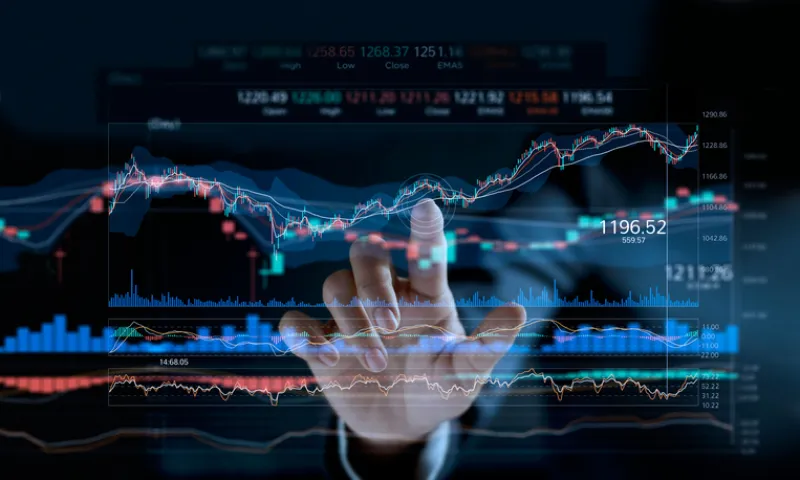By Howard Moore
As electronic trading technology has evolved, the market has embraced increased functionality, and regulators have raised standards in response. In particular, the implementation of MiFID II has significantly changed the way that the buy side and the sell side are addressing execution quality. As a result, there is an emphasis on more collaboration, and growing demand for new ways to evaluate and implement trading strategies, and to look deeper into the entire trading process. As asset owners, asset managers, and their brokers recognize that best execution positively affects their respective businesses, two themes have emerged: transparency and control.
In addition, there is a greater emphasis on benchmarking, analytics, and risk control. According to a 2017 Greenwich Associates study, the responsibilities of a buy-side trader have changed dramatically – and far beyond trading. With trading platforms having evolved to provide a new level of control, the buy side seems to want even more. Asset owners have heightened expectation levels for transparency as well, and many have long sought best execution practices. As result, traders must oversee due diligence on each broker’s suite of algorithms, transaction cost analysis (TCA), venue analysis, market centers and their order types, research budgets, and settlement oversight. However, venue analysis, for example, is a functionality that is found lacking in many TCA products, according to the 2016 Trading Desk Optimization study by Greenwich. This would seem to indicate traders need new tools beyond what they already have – and soon.
Improved execution quality
This demand for control and transparency has prompted a transformation of trading work flow. and in a 2017 survey by the Tabb Group, 83 percent of U.S. buy-side trading heads saying they were specifically making such changes. The priority is to improve execution quality – and to gain a better understanding of where to route orders to achieve and measure best execution benchmarks. The survey indicates they would also like to fine-tune transaction cost analysis, review and customize broker algorithms, and better source liquidity.For example, many on the buy side have upgraded internal TCA inputs, from custodian-based information to time-stamped trade data uploaded directly from in-house order management systems. This provides more actionable information by matching actual trade decisions with suitable benchmarks, like volume-weighted average price, which allows better assessment of trading decisions and broker quality. As a result, it’s possible to monitor the performance of trading relationships, and refine processes, if necessary, by assessing routing statistics to direct any changes, and to evaluate and source new relationships. Indeed, the buy side is reassessing how they select brokers. Execution quality is the most important factor, according to the Greenwich Associates study, followed by access to liquidity, venue analysis, and TCA reporting.
Holding up under scrutiny
“Venue analysis and TCA are a really important tool, not only to achieve best execution, but also to meet regulatory standards of accountability,” says Joe Wald, CEO of Clearpool Group. The process that demonstrates accountable order routing management is now a shared responsibility between the buy side and the sell side. In the past, brokers provided basic data on trading volume and pricing that indicated whether a particular venue – a dark pool or exchange – was an acceptable or unacceptable place to trade. “But that’s not the world we currently live in,” Wald says. “What they really need to know is how the venue performed based on the intent of the order. The way we do venue analysis is deeply rooted in intent.”Were the fill rates, latencies, and reversion, for example, at a particular venue positive for the type of trade being executed? For a given trade, would a particular venue go to the top of a routing queue or not? Perhaps it would if it does well at the midpoint, has respectable trade sizes, and good reversion. “But if I’m looking for passive liquidity, that venue could be on the bottom,” says Wald. Those answers hadn’t been available with the previous generation of venue analysis tools, but newer technology provides them nearly instantly.
Not long ago, a majority of electronic trades went through only two or three brokers, Greenwich Associates notes in its survey that execution quality is becoming more important than the algorithms used, and traders are more willing to try new electronic brokers if they can demonstrate better execution performance. Top selection criteria include ease of system use, reliability, and quality of technical support.
Brokers are required to outline their execution provisions and the quality of execution achieved in published reports, thus it’s critical for them to embrace the transparency and control of new technology so that robust best execution policies and scrupulous monitoring on a regular basis consistently produce the best result. For buy-side firms, this means having the right tools to capture all the relevant information and making best use of it when executing trades. It also means they must share it with brokers and venues to verify that they are, in fact, achieving the best results. “It’s not a standardized process,” Wald says. “Ultimately, there needs to be more collaboration among everyone in the market to achieve best execution for each client.”
Watch the video, Control and Transparency: Validating Best Executions





